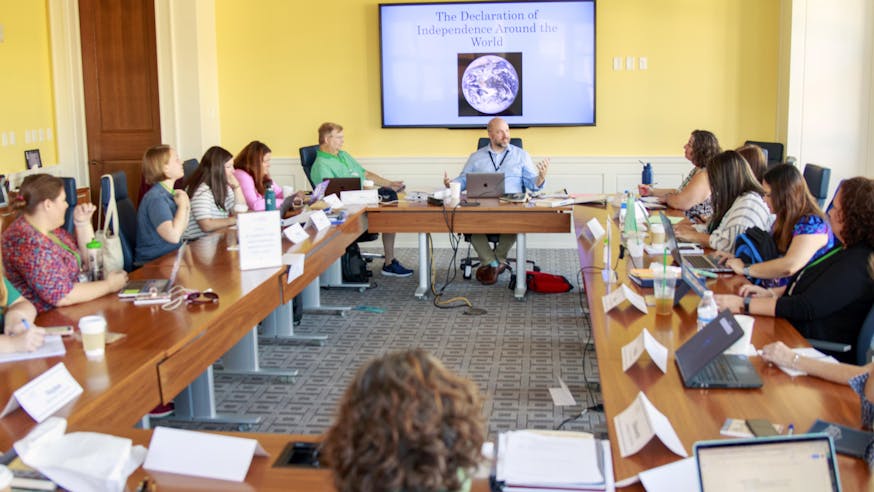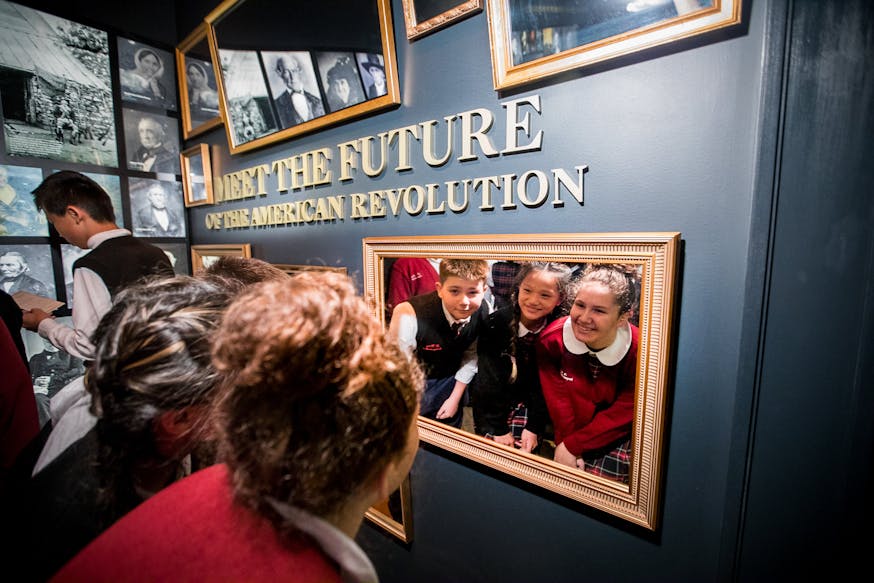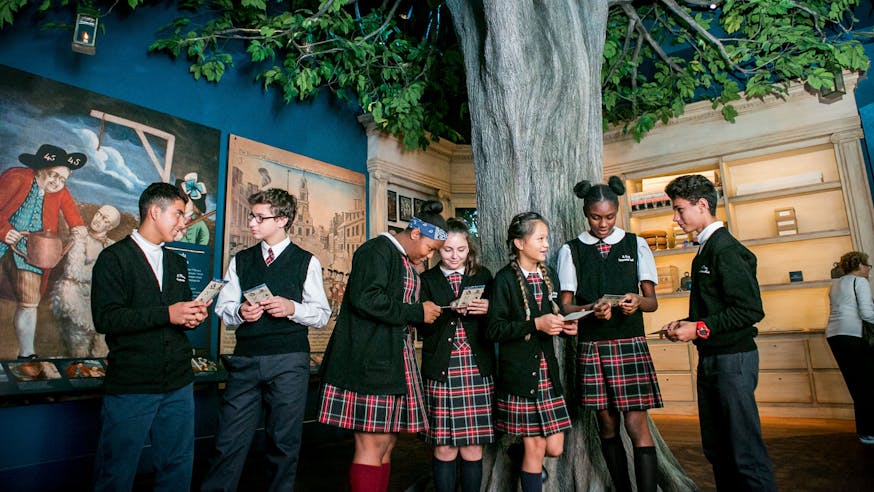Primary Source Perspectives: Who Were the People that Experienced the American Revolution?
May 14, 2024, from 7-8:30 p.m.- May 14, 2024, from 7-8:30 p.m.
- Online
-
Register for Free
This workshop is free for educators.

Primary sources are first-hand accounts or products of historic events created by the people who lived through, witnessed, or were directly impacted by those events. These materials offer direct evidence of the past and have the power to help students learn about the people and events that shaped the American Revolution from those who experienced it first-hand.
Participating teachers in this free educator workshop will explore the American Revolution through primary sources that highlight a diverse group of people and perspectives, including Abigail Adams, Crispus Attucks, James Forten, Marquis de Lafayette, and George Washington. We will also dig deeper into lesser-known stories such as Sally Wister, a teenager living through the occupation of Philadelphia. Join us as we examine diaries, letters, muster rolls, applications for military pensions, artwork, and objects. Together, we’ll explore opportunities to use primary sources in the classroom that help bring the American Revolution to life and discuss how your students can use historical thinking skills to better understand them.
Learn More

Professional Development Workshops

For Students & Educators
